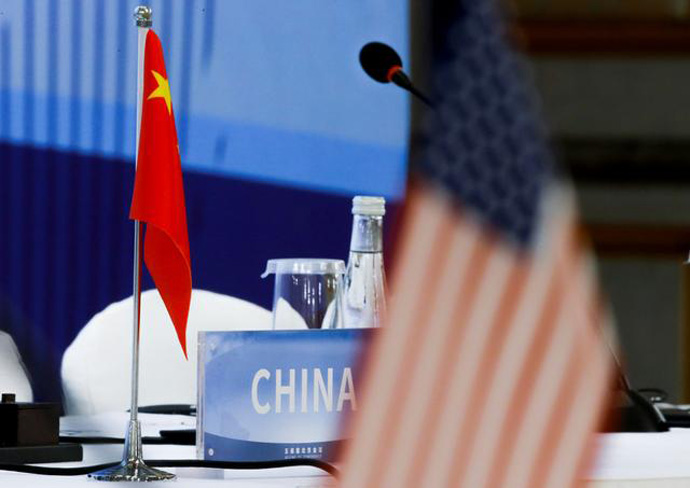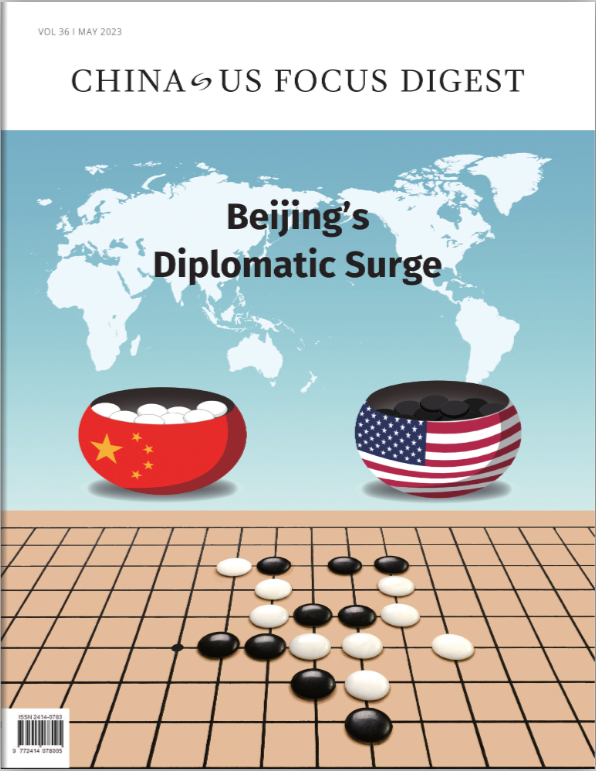
As China-U.S. relations turn volatile, the international community is increasingly concerned about the risk of military conflict at certain hotspots. How to stabilize China-U.S. security ties and implement the Chinese leader’s strategy of major-country diplomacy has become a key research subject for Chinese scholars.
Those familiar with mainstream policies in both China and the U.S. generally don’t believe either side intends to provoke a military conflict. However, there are different voices among both countries’ policy analysts, especially some that have had low exposure and don’t necessarily represent official thinking, that may easily misguide the two sides’ threat perception. Take Taiwan for example. The official U.S. assessment is that Chinese decision-makers’ goal is to achieve national defense capabilities sufficient to dominate the Taiwan Strait by 2027. Even if that’s accurate, it doesn’t mean the military option has been identified as China’s preferred approach to solving the Taiwan issue, nor does it mean there is an ultimate time frame for the matter.
Yet such misgivings have conspicuously facilitated the American right wing’s political mobilization on topics about China. To the U.S. side, China’s accelerating the development of corresponding military capabilities itself reveals its preference for using force. Similarly, China believes the U.S. seldom hesitates to undermine geopolitical rivals by provoking military conflicts. Since the U.S. may weaken Russia by taking advantage of the Ukraine war, for example, it may attempt to realize its goal of weakening China via provoking a conflict across the Taiwan Strait.
When both sides think the other is motivated to actively resort to military action, that assumption itself will further inspire the determination to win an upcoming war, as well as the degree of war preparedness necessary. Such internal factors, which are driving cross-Strait conditions toward a higher risk of military conflict, have yet to be fully appreciated in the two countries’ policy circles.
In Washington, the Chinese authorities’ expressions of dissatisfaction with concentrated U.S. strategic deployments rarely lead to substantive debates and responses. This reflects the fact that official bilateral exchanges have limited effect. Recently both sides have reiterated and reconfirmed their respective traditional positions on Taiwan, which is no doubt constructive. Yet it’s a worrying trend that Washington policy circles are less and less hopeful about constructive exchanges at more substantial levels. For instance, American scholars have demonstrated a universal inability to see whether there have been specific new policy modifications behind the Chinese side’s frequent reiteration of its traditional position on Taiwan.
In recent years, China’s highly efficient national defense buildup, proactive efforts for independent economic, scientific and technological progress, and continuously expanding global influence have made the U.S. worry that more expansionist strategic deployments on regional security issues are coming. U.S. academic circles have engaged in fierce debates over whether China is promoting new measures and have shown universal concern about potential future variables in regional and international security. Nowadays, as Chinese national strength rises rapidly and its foreign policies become more proactive, some international suspicions are unavoidable. Failing to find a way to dissolve these suspicions, however, may result in negative impacts on Chinese and American perceptions. Core strategic issues have augmented such risks.
Since the two sides have for a long time been unable to initiate more substantial in-depth communication, other than reiterating traditional positions and principles, U.S. policy circles have shown their prevailing doubts about increasing mutual understanding and trust through dialogue, and are universally pessimistic about managing differences and risks via diplomacy.
The sense of hopelessness and pessimism has directly called forth the voices of Washington hard-liners’ voices, and enhanced military deterrence has resonated broadly. Although the moderates don’t believe military deterrence is the optimum option and may introduce various other risks, military deterrence as a precaution against major geopolitical risks has become the only feasible option, in American eyes, when positive effects are increasingly difficult to achieve through dialogue and communication.
Click to read the latest issue of China-US Focus Digest
Similarly, Chinese academic circles have also raised fundamental questions about U.S. willingness for consensus-building via diplomatic channels in recent years. They believe the U.S. side has failed to undertake substantive diplomatic communication and lacks the sincerity for faithfully honoring its promises, but has instead focused on preserving its own military hegemony and challenging China’s core interests.
The two sides’ weakening confidence in dialogue and exchanges not only reflects a peculiar conundrum facing bilateral ties but also exposes at a deeper level their pressing need for effective communication. Judging from the Chinese side’s practical moves to reiterate its commitment to peaceful reunification and proactive diplomacy, the sense of hopelessness and pessimism in the U.S. is not based on a profound understanding of the Chinese stance but rather on the failure to find correct channels for effective dialogue.
Therefore, U.S. academic and policy research circles need to change their current obsession with building military deterrence and shift their focus onto how America's China policies which they consider reasonable have come into such serious conflict with mainstream Chinese ideas and have intensified mutual threat perception. Aside from the fact that the military deterrence the U.S. side emphasizes is not only of no help to promoting strategic stability but will only enhance the Chinese need for military countermoves and produce the very outcomes the U.S. side wishes to avoid.
Effective communication with the Chinese side means the U.S. should reconfirm its policy against separation at official levels and realize the importance of comprehensive dialogue with the Chinese leadership, experts, scholars and the general public. This is the only way to understand the Chinese position on Taiwan in an all-around manner and thus more actively and effectively respond to China’s overall interests perception.
For example, the U.S. government has stubbornly assumed that the mainland’s refusal to forsake the military option for national reunification constitutes a challenge to international law. This assumption has directly promoted increasingly hardened positions on Taiwan within the U.S. and intensified negative feelings — and threat perception — in American society.
International academic circles, however, have yet to carry out in-depth studies on whether the U.S. government’s assumption is in line with the international community’s mainstream reading of international law and rules. China has worked to get rid of the destructive impacts of the so-called China threat theories via governmental and non-governmental efforts but has found it extremely difficult to offset the hostile atmosphere originating from a couple of key topics.
Scholars of international law and international relations in China, the U.S. and other countries may conduct in-depth academic analysis on these specific subjects. Substantive exchanges at this level will help both China and the U.S. trace their different understandings to their sources and help the international community, including the U.S., to better appreciate the historical and legal reasons behind the Chinese position.
Another example is that some hard-liners in the U.S. often mistakenly presume the Chinese side has given up on a peaceful rise and is determined to resolve conflicts of interests with force. Such erroneous ideas usually derive from one-sided information and lack of comprehensive understanding of the Chinese society.
If American experts, scholars, mainstream media, social organizations and opinion leaders could have all-around contact and exchanges with their Chinese counterparts, it would be reduce the likelihood of a simplistic, one-sided misreading of multifaceted public opinion and the comprehensive decision-making regime in China. At the same time, all-around, all-of-society-level dialogue and exchanges will also help mitigate the effects of some American China hawks’ endeavors to fan animosity against China.
President Xi Jinping pointed out that amity between the two peoples is the key to sound state-to-state relations. The China-U.S. mismatch on strategic issues is to some extent an outcome of over-dependence on limited, simplistic official statements.
The U.S. side should accept and promote all-around bilateral dialogue and exchanges between the two countries’ national leadership, experts, scholars and general public with an open mind. In particular, it should make efforts to identify the causes and sources of significant disagreements. This will contribute to eliminating U.S. misreading of Chinese purposes, help the U.S. achieve a more comprehensive appreciation of Chinese positions and concerns, facilitate the building of a more equal and cooperative relationship and reduce the potential risk of conflicts and disastrous consequences caused by such hot-spot issues as Taiwan.

